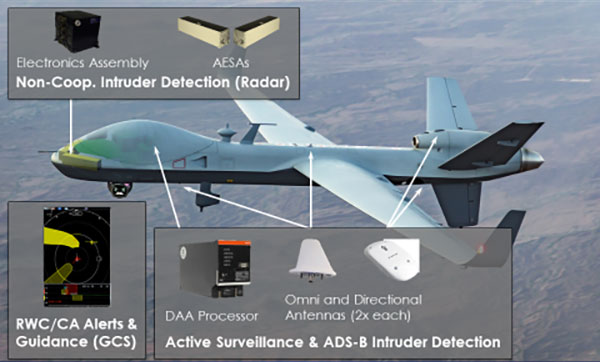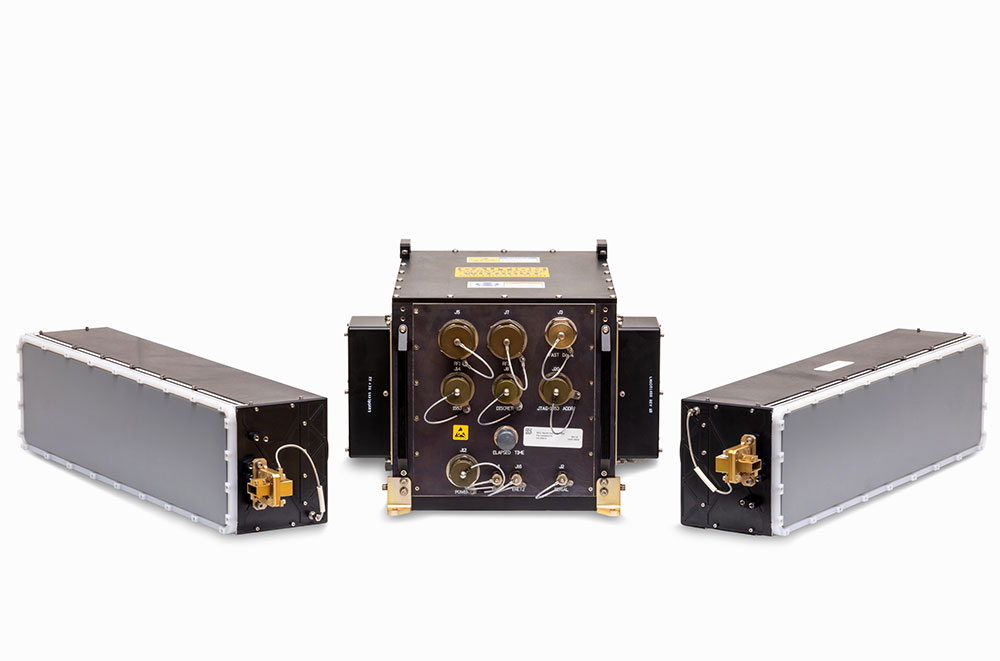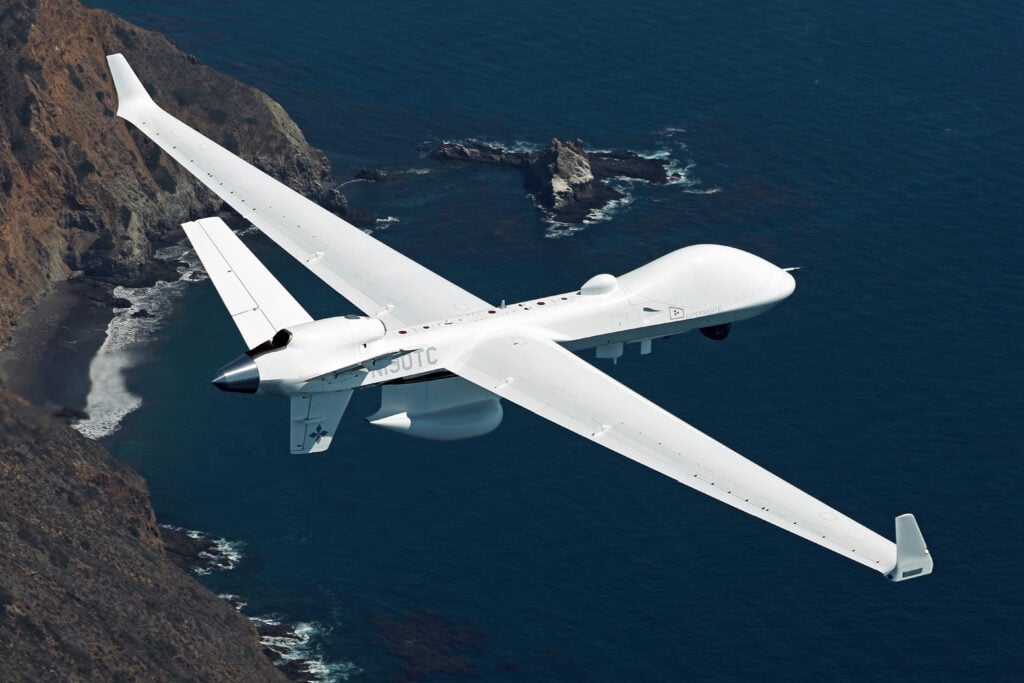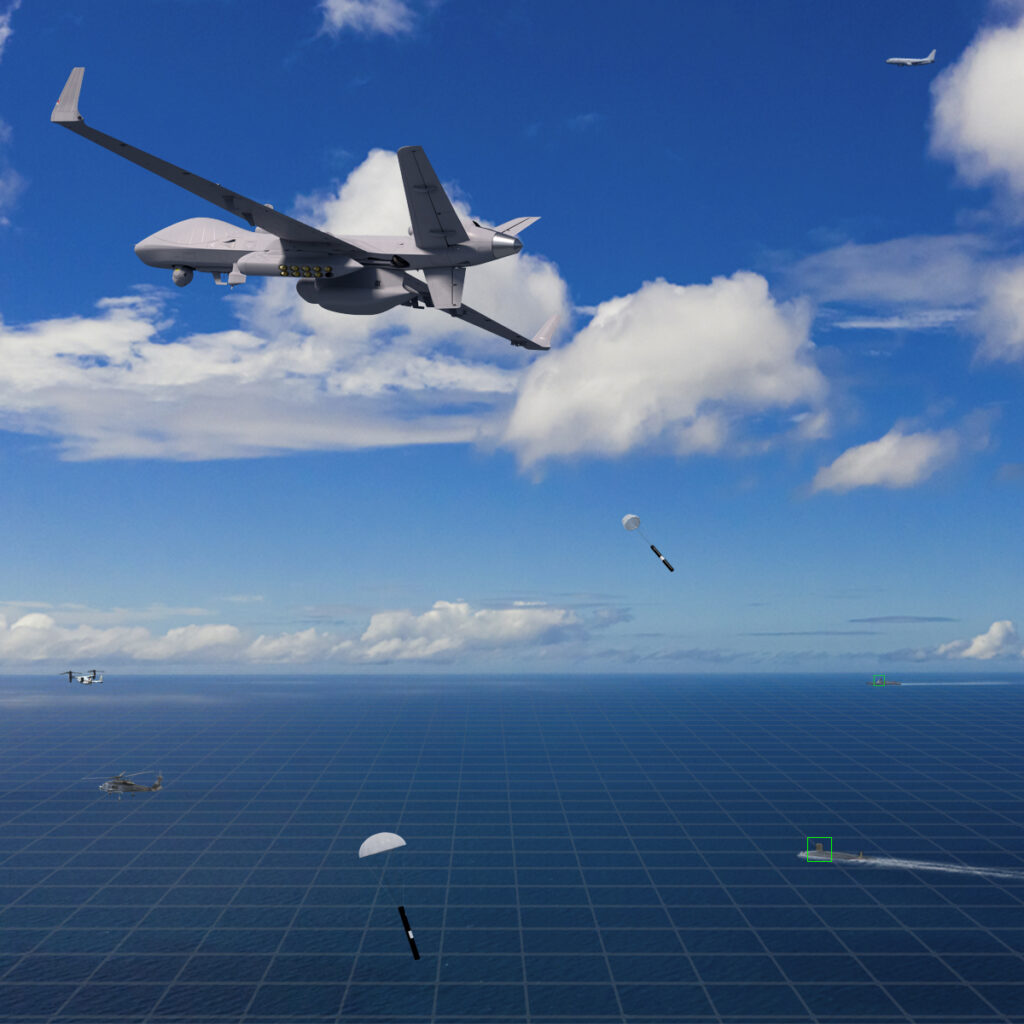Constellations of satellites are being proposed in large
numbers; most of them are expected to be in orbit within the next
decade. They will provide communication to unserved and underserved
communities, enable global monitoring of Earth and enhance space
observation.
Constellations have their greatest potential in the communication
field. The upcoming era of the Internet-Of-Things requires the
communication infrastructure to handle huge amounts of data and to
guarantee service in any geographical position. Constellations, however,
also have great potential in weather science, safety/security and
disaster monitoring.
As the number of satellites continues to increase, satellites become
an important part of the IoT and 5G/6G communications. How to deal with
the data of the satellite Internet of Things is a problem worth
considering and paying attention to. Several space startups are
integrating micro-data centers into their designs, offering computing
power to process satellite imaging data or monitor distributed sensors
for Internet of Things (IoT) applications.
Edge computing requirements
The number of remote sensing satellites has increased dramatically in
satellite launches in recent years. After acquiring the remote sensing
image data of the satellite, the researchers used the artificial
intelligence algorithm and the powerful computing power of the ground
data center to extract the hidden information in the remote sensing
image. However, researchers need to spend a lot of time and cost to
complete this process. In the existing satellite communications, most of
the observation, relay, and communication satellites are single-star
and single-chain, and there is no network. Due to the limitation of
energy consumption, the available processors on the satellites have poor
performance and cannot meet the growing demand for space computing
tasks.
At the same time, the satellite communication rate between satellites
and other satellites, and between satellites and the ground, is
generally not improved. The amount of data generated by the on-board
sensor is large, causing a high delay in the data transmission process,
which is very disadvantageous for scenes with high real-time
requirements (such as early warning).
The demand for processing data close to its origin led to increased
popularity of the edge computing paradigm in research and industry. The
main idea behind edge computing is to embed computing resources into the
edge of the network, i.e., close to clients. Edge Computing is a
Distributed Computing Model when computation takes place near a location
where data is collected and analyzed, rather than on a Centralized
Server or in the Cloud. Compared to cloud computing, resources are thus
available with low latency and bandwidth costs. For space-based
systems, edge computing can save both time and energy. Energy is an even
more precious resource in space than on Earth, so cutting down on
transmissions, whether to relay information or run equations, can be
hugely important. Preventing data from being transmitted to the cloud
can also reduce privacy and security risks.
For example, sensor-equipped swarms of nanosatellites, such as
ChipSats and CubeSats, can use edge systems to process the data they
collect in low-Earth orbit without activating the satellite’s
power-hungry radio. These satellite swarms, which fly about 250 to 370
miles above the Earth’s surface, can be clustered and organized to
support important missions in the study of weather, climate science,
national security and disaster response.
Fog and Edge Computing implementations
Satellite communication systems are flexible enough to be adapted for
the implementation of Fog and Edge Computing. Implementation of Edge
Computing in satellite telecommunication systems can be ensured by
supplementing of the User Terminal or VSAT Terminal Modem with an
additional Computing Module or Single-Board Computer. Structurally, a
User Terminal or VSAT Terminal is a board with modem chips installed on
it. Through modernization, such a design can be supplemented with a
Single-Board Computer, which will provide the implementation of Edge
Computing.
An alternative option is to connect a Single-Board Computer to an
Ethernet-type Local Area Network with a Wi-Fi router being connected to
it as well as other equipment of radio access technology for short-range
IoT Smart Things. This added Computing Capacity will support the IoT
Smart Things computing needs within the coverage of a short-range radio
access network. In this case, only the results information about the IoT
local information processing will be transmitted via a satellite
communication channel.
One of the proposed architectures is a hierarchical network of
satellite IoT supported by terrestrial data centers. Specifically, the
cloud-edge stratified satellite IoT edge computing system consists of
three parts: the satellite IoT cloud node, the satellite IoT edge node,
and the ground data center. The satellite IoT edge nodes have computing
and storage capabilities and use a common virtualization platform that
can deploy different services as needed. Satellite IoT edge nodes can
communicate with each other, and satellite IoT edge nodes and satellite
IoT cloud nodes can cooperate with each other.
This can bring two benefits. First, satellite IoT edge nodes can
request assistance from satellite IoT cloud nodes or ground data centers
to offload their computing tasks to them. Second, satellite IoT edge
nodes can also accept tasks from satellite IoT cloud nodes or
terrestrial data centers, or establish fast service clusters with other
satellite IoT edge nodes.
The implementation of Fog Computing in the satellite segment of IoT
Systems is possible by supplementing the orbital segment with Computing
Capacity for the Fog computing implementation. Supplementing the Orbital
Segment of Satellite Communications Systems with Computing Capacity
will allow the implementation of Fog computing for processing of the IoT
Information accepted from IoT Smart Things located in the service area
of the Satellite. As a result, the efficiency of information processing
will increase, and the Delay Time will be reduced.
An alternative solution is the development and launch of GEO
Satellite, with a Cloud Data Center Module as a Payload. These
Satellites will be accessed via GEO Satellite-Repeaters according with
Inter-Satellite Links. To increase data storage and computing operations
liability, to increase cloud computing productivity, Satellite Cloud
Computing Data Centers will be connected to ground-based Cloud Computing
Data Centers provided with special high-speed secure radio links.
Satellite IoT cloud nodes have more powerful computing and storage
capabilities than satellite IoT edge nodes. Satellite IoT cloud nodes
are equipped with heterogeneous resources, such as CPU, GPU, and FPGA.
It can not only handle various applications unloaded from satellite IoT
edge nodes, but also complete task scheduling, task analysis, data
fusion, intelligent distribution, and fast service cluster construction
of the entire satellite network.
The ground data center has the capability of a large cloud computing
center that can communicate with satellite IoT nodes or the ground
Internet. Compared to satellite IoT nodes, the ground data centers have
the highest computing power and the most storage resources.
Challenges for LEO edge
The highly dynamic nature of satellite constellations and their
limited capacity for computational power means that existing edge
computing platforms are not yet ready for being applied to the LEO edge.
Mobile Server Infrastructure. The servers attached to satellites in a
LEO constellation is that these satellites orbit the earth at high
speeds. For example, a satellite at an altitude of 550km must maintain a
speed of 27,000km/h to maintain its orbit. Consequently, the servers
also move at this speed. For the static ground station equipment, this
means that they must frequently change their communication partner.
Same-model Servers. Then, satellites in a constellation are mostly
the same model. The reason for this is that satellites orbit the earth
continuously while the earth revolves beneath the satellite
constellation. Thus, each satellite eventually covers each part of the
earth which means that using different kinds of satellites for different
regions is not possible. Subsequently, the servers must also be of the
same model. It can be possible to upgrade server capabilities over time
as satellites reach the end of their lifetime, yet developing different
versions can have a negative impact on development and production costs.
Homogeneously Distributed Servers. Due to their non-geostationary
nature, satellites are also homogeneously distributed across the globe,
with satellites evenly spaced across an orbit. This means that each
ground station has access to more or less the same amount of equally
equipped satellites at all times.
Heterogeneous Demand. Nevertheless, demand is of course not
homogenous across earth. Urban areas have a higher client density which
increases resource demand compared to rural areas or oceans with a
smaller client population.
Limited Compute Capabilities. As a consequence of being deployed in
space, satellite servers’ capabilities must be limited. The reason for
this is that energy consumption and heat generation must be kept low for
economical reasons. Larger heat dissipation mechanisms, batteries, or
solar arrays lead to higher weight and, subsequently, higher launch
costs.
Another effect of placing servers on satellites in LEO is that those
servers cannot be accessed for maintenance. Consequently, if a satellite
or server fails, it remains failed and can only be de-orbited. As with
cloud computing, developers expect their applications to be highly
available in a LEO edge environment as well. Consequently, a LEO edge
platform needs to abstract from the widely distributed and heterogeneous
underlying infrastructure to provide fault-tolerance.
Fixed Server Capabilities. Not being able to access individual
servers directly also means that they cannot be upgraded. Over the
lifetime of a satellite, typically about 5 years, the server
capabilities and, with it, the total capability of the constellation of
servers, remain fixed.
Fixed Number of Servers. Horizontal scalability is also limited, as
we can place servers only on satellites that are part of the
constellation and the size of the constellation cannot be changed
easily. Launching and deploying additional satellites requires approval
by governmental agencies and competing space Internet companies may
lobby to limit constellation sizes, especially as LEO is a limited
resource
OrbitsEdge Plans Racks in Space
Florida-based OrbitsEdge is embracing a data center in orbit model,
taking off-the-shelf rackmount servers and bolting them into a satellite
bus (the structural frame housing payloads). “We’re both edge computing
and data center,” said Rick Ward, Chief Technical Officer of
OrbitsEdge. “We want to put big-performance computing infrastructure
into space to process data, cleanse it, aggregate data from multiple
sources and analyze it. We are that missing piece of the infrastructure
to commercial space.”
OrbitsEdge is able to communicate with other satellites to collect
and process their data, as well as performing overhead edge computing
where a traditional data center is unavailable or not close enough. The
company sees opportunities in offloading and storing data from Earth
Observation satellites, processing it into immediately usable imagery,
and sending the results directly to end-users in the field. It has had
discussions with the U.S. Department of Defense, NASA, and commercial
cloud providers on how such non-traditional resources could be useful
for various use cases on Earth, in space, and on the surface of other
celestial bodies.
“It’s another location for processing data above the clouds,” said
Sylvia France, President of OrbitsEdge. “There’s a lot of interest in
fintech, being able to make buy/sell decisions based on counting cars in
parking lots. We’re also talking to entertainment companies as well,
from space tourists to augmented reality firms.”
The OrbitsEdge SatFrame is the company’s proprietary satellite bus,
with a standardized 19-inch server rack with available volume for 5U of
hardware. The company’s first two SatFrame pathfinder satellites will
support 18-inch deep hardware with production designs capable to grow to
support full-sized 36 inch deep hardware.
“It’s another location for processing data above the clouds,” said
Sylvia France, President of OrbitsEdge. “There’s a lot of interest in
fintech, being able to make buy/sell decisions based on counting cars in
parking lots. We’re also talking to entertainment companies as well,
from space tourists to augmented reality firms.”
The OrbitsEdge SatFrame is the company’s proprietary satellite bus,
with a standardized 19-inch server rack with available volume for 5U of
hardware. The company’s first two SatFrame pathfinder satellites will
support 18-inch deep hardware with production designs capable to grow to
support full-sized 36 inch deep hardware.
LEOcloud establishes partnerships for satellite-based cloud computing
Satellite communications startup LEOcloud announced a partnership in
July 2021 with supercomputer firm Ramon.Space to develop satellite-based
cloud computing.
LEOcloud intends to offer “low latency, highly secure, high
availability” cloud services, linking customers on the ground with
“satellite data suppliers, hybrid cloud edge computing services and
global connectivity” in Phase 1 of its strategy, according to a LEOcloud
PowerPoint presentation. In Phase 2, LEOcloud, “will develop, launch
and operate a satellite-based cloud infrastructure providing low
latency, secure, high availability, mission-critical cloud services,”
according to the presentation.
“Having access to data from space assets quickly and reliably is
absolutely critical to the success of space missions,” Jonata Puglia,
Leaf Space co-founder and CEO, said in a statement. Working with
LEOcloud will enhance Leaf Space’s ground segment as a service business,
he added.
AWS successfully runs AWS compute and machine learning services on an orbiting satellite
Amazon Web Services (AWS) announced in Nov 2022 that it successfully
ran a suite of AWS compute and machine learning (ML) software on an
orbiting satellite, in a first-of-its-kind space experiment. The
experiment, conducted over the past 10 months in low Earth orbit (LEO),
was designed to test a faster, more efficient method for customers to
collect and analyze valuable space data directly on their orbiting
satellites using the cloud.
Providing AWS edge capabilities onboard an orbiting satellite for the
first time lets customers automatically analyze massive volumes of raw
satellite data in orbit and only downlink the most useful images for
storage and further analysis, driving down cost and enabling timely
decision making.
“Using AWS software to perform real-time data analysis onboard an
orbiting satellite, and delivering that analysis directly to decision
makers via the cloud, is a definite shift in existing approaches to
space data management. It also helps push the boundaries of what we
believe is possible for satellite operations,” said Max Peterson, AWS
vice president, worldwide public sector. “Providing powerful and secure
cloud capability in space gives satellite operators the ability to
communicate more efficiently with their spacecraft and deliver updated
commands using AWS tools they’re familiar with.”
AWS is committed to eliminating technical challenges associated with
operating in space, including high latency and limited-bandwidth
networks. AWS collaborated with D-Orbit and Unibap, two of its global
space partners, to directly address these challenges as they apply to
satellite operations.
D-Orbit is a leader in the space logistics and transportation service
industry and a member of the AWS Partner Network (APN). By applying AWS
compute and machine learning services to Earth Observation (EO)
imagery, D-Orbit was able to rapidly analyze large quantities of space
data directly onboard its orbiting ION satellite.
“Our customers want to securely process increasingly large amounts of
satellite data with very low latency,” said Sergio Mucciarelli, vice
president of commercial sales of D-Orbit. “This is something that is
limited by using legacy methods, downlinking all data for processing on
the ground. We believe in the drive towards edge computing, and that it
can only be done with space-based infrastructure that is fit for
purpose, giving customers a high degree of confidence that they can run
their workloads and operations reliably in the harsh space operating
environment.”
The teams collaborated to build a software prototype that would
include the tools they together identified as essential for the EO
mission, including AWS ML models to analyze satellite imagery in real
time, and AWS IoT Greengrass to provide cloud management and analytics
even during periods of limited connectivity.
The AWS software prototype was integrated onto a space-qualified
processing payload built by Unibap, a high-tech company based in Sweden
and another AWS Partner. The Unibap processing payload was then
integrated onto a D-Orbit ION satellite and launched into space.
“We want to help customers quickly turn raw satellite data into
actionable information that can be used to disseminate alerts in
seconds, enable onboard federated learning for autonomous information
acquisition, and increase the value of data that is downlinked,” said
Dr. Fredrik Bruhn, chief evangelist in digital transformation and
co-founder of Unibap. “Providing users real-time access to AWS edge
services and capabilities on orbit will allow them to gain more timely
insights and optimize how they use their satellite and ground
resources.”
Throughout the experiment, the team applied various ML models to
satellite sensor data to quickly and automatically identify specific
objects both in the sky – such as clouds and wildfire smoke – and
objects on Earth including buildings and ships.
Raw satellite images and datasets like these are usually quite large,
so the team created a way to break down the large data files into
smaller ones. Using AWS AI and ML services helps reduce the size of
images by up to 42 percent, increasing processing speeds and enabling
real-time inferences on-orbit. The team managed the bidirectional
movement of space data over multiple ground station contacts to provide
allowance for an increased delay tolerance between communications. This
was achieved by managing a reliable TCP/IP proxy between the satellite
and the AWS Cloud. This modification made it simpler for ground crews to
manage the file transfers automatically, without manually processing
the downlinks over multiple contacts.
Market
As adoption of cloud computing continues, NSR’s latest report, Cloud Computing via Satellite, 2nd Edition (CCvS2) forecasts
$21 billion cumulative cloud services revenues by 2030 across four key
market segments. The impending wave of both LEO, MEO and GEO-HTS satcom
services is set to significantly boost long-term cloud adoption and
enhance market engagement opportunity, with 233 exabytes of traffic
projected.
“The transformation brought about by the adoption of cloud computing
is only beginning to impact the satellite sector,” states Shivaprakash
Muruganandham, NSR Senior Analyst and report author. “Numerous verticals
from cloud-hosted applications to cloud storage/processing by
geospatial analytics providers, will see change and development.”
Partnership with large IT and cloud players drives market capture and
growth opportunity across multiple segments. Within those core
segments, Satellite Communications will continue to lead traffic via
satellite, while Earth Observation data downlinks lead in revenues,
representing a $10 billion opportunity, as ground station and data relay
services enter the downlink market.
“While growth opportunity is forecast for both existing and nascent
markets, cost scalability remains a challenge,” added NSR Analyst and
Report co-author, Arthur Van Eeckhout. “However, cloud adoption is
dramatically decreasing the legacy knowledge requirements for
engagement, lowering the barriers to entry for space-derived data
services. Today, start-ups born in the cloud have greater opportunities
available to them than in the past.”
References and Resources also include:
https://datacenterfrontier.com/data-centers-above-the-clouds-colocation-goes-to-space/
https://spacenews.com/introducing-leocloud/
https://aws.amazon.com/blogs/publicsector/aws-successfully-runs-aws-compute-machine-learning-services-orbiting-satellite-first-space-experiment/





